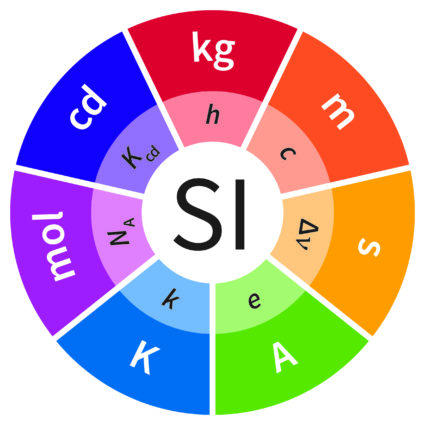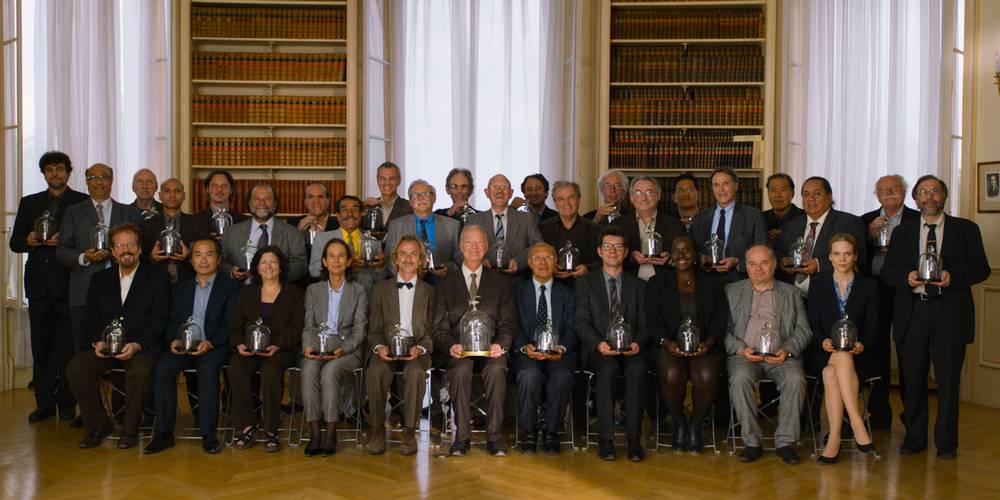29 April 2019
In a bid to review the International System of Units (SI), the International Bureau of Weights and Measures gathered at the 26th General Conference on Weights and Measures on November 16, 2018. Sixty member states have voted for changing four out of seven basic units of measurement. The kilogram is among the modified. Before describing the key points, let us have a closer look into the kilogram and its history.

What is the kilogram?
The kilogram is originated from the gram, the weight of a cubic centimeter of water at the melting point of ice. A combination of the Greek word for a thousand, khilioi, and gramma, the Latin term for “a small weight”, the term was first coined in France. Initiated by Louis XVI who tasked a group of scientists to develop a new measuring system, the kilogram was finally identified in connection to a physical prototype after the French Revolution. In 1875, the unit of mass, named as “the kilogram of the archives”, was embodied by a manufactured artefact that corresponds to an exact one kilogram.
What is the prototype of the kilogram?
 The International Prototype of the Kilogram, also known as Le Grand K, was the internationally sanctioned artifact that defined the amount of weight equivalent to one kilogram. It is kept under three glass domes in a vault for protection, courtesy of BIPM.
The International Prototype of the Kilogram, also known as Le Grand K, was the internationally sanctioned artifact that defined the amount of weight equivalent to one kilogram. It is kept under three glass domes in a vault for protection, courtesy of BIPM.
Since 1889, the unit of mass kilogram has been defined on the basis of an artefact. For over one hundred years, the International Prototype of the Kilogram (IPK), a cylindrical artefact made of an alloy of 90% platinum and 10% iridium, marked the reference for all the kilogram measurements worldwide. This base unit called “Le Grand K” by the French is stored in an isolated, high-security environment at Pavillon de Breteuil.
 This cylinder is an exact replica of the International Prototype of the Kilogram, or IPK. Stored at the National Institute of Standards and Technology in Gaithersburg, Maryland, this particular copy is the basis for all weight calibrations in the United States.
This cylinder is an exact replica of the International Prototype of the Kilogram, or IPK. Stored at the National Institute of Standards and Technology in Gaithersburg, Maryland, this particular copy is the basis for all weight calibrations in the United States.
The copies produced on the basis of IPK are given serial numbers and sent to other countries. Turkey, for instance, is home to the kilogram prototype no. 54 kept at the Tübitak National Metrology Institute.
But how is the accuracy ensured for all the copies?
This is what initially unearthed the first needs for definition change. Every forty years, the prototypes from across the world were sent to Pavillion de Breteuil to be compared to the “most accurate” kilogram, “Le Grand K”. Things have gone south with these comparisons that were made as few as three times to date. The essential kilogram and its prototypes have shown dissimilarities. It was unveiled that the basic kilogram had lost over time 50 μg (microgram), the weight of a grain of salt.

An image from the movie, 1001 grams, about the journey of a Norwegian scientist who attends a seminar in Paris on the actual weight of a kilo.
What lies behind the change of definition? Does the kilogram weigh less than it should?
Buying one kilogram of salt while aware that a grain is missing may not have a significant impact on our lives, but it makes a tremendous difference in lab experiments, scientific research, pharmaceutical and technology industries where even a change at a microgram scale may have immense implications. The plan is to prevent underweight scaling by redefining the unit of kilogram.
A slight but massive change: What brings the new definition?
We have mentioned earlier that the current definition of kilogram refers to a cylindrical artefact made of platinum and iridium, the International Prototype of Kilogram (IPK). Its successor, on the other hand, suggests the universal Planck Constant replacing this artefact object.
You might be asking: “But what is the Planck constant?” Well, you are not the only one in asking. The Planck constant, named after physicist Max Planck, is one of the two key constants in modern physics, along with the light speed. The Planck constant (h) is the fixed ratio of the energies (E) in a photon, the smallest particle of energy in light, and their frequencies (ν), and formulated as E=hν.
Setting aside the formula, the key point here is that the kilogram will be calculated with Planck, a universal constant. The overhaul covers four out of seven universal units with the kilogram, amper, Kelvin and mole redefined respectively as a function of the Planck constant, elementary charge constant, the Boltzmann constant, and the Avogadro constant.
A fresh look at the Anatolian Weights and Measures collection by the Suna and İnan Kıraç Foundation!
In fact, this is not the first time that the definition of a weighting unit has been changed. It even kindly reminds us of the long history of the weighting units that had various names through time. Long before the metric system, the oldest weighing and measuring systems developed for crop weighing, land measurement, and standardization of commercial systems are harbored in Egypt, Mesopotamia, Palestine and Anatolia.

Early İslamic weighs from the Anatolian Weights and Measures Collection.
For example, the base unit of weight across Mesopotamia, Palestine and Anatolia was called mina. 1 mina equals 60 shekels, and 1 shekel 180 grains of barley. The foundation for many other units of weight, a mina corresponded to 500 g of the modern metric system.

Animal-shaped weights from the 2nd-1st millennium BC from the Anatolian Weight and Measures Collection.
The inspiration for units of weight came, since the very birth of trade, from the nature, i.e. plants, animal shapes, divine figures etc., until 1875 when the unit of mass was defined as a kilogram of an artefact. Civilizations, however, have overlooked the fact that those artifacts are subject to change, even if by a microgram, regardless of the ultimate efforts towards conservation.

Late Roman and Byzantine steelyard weights in the form of gods and goddesses from the Anatolian Weight and Measures Collection.
The roughly 10,000-piece Anatolian Weights and Measures Collection established by Suna and İnan Kıraç since the 1980s exhibits measurement tools and scales used by many Anatolian civilizations of the prehistoric age, Classical Age, Principalities, the Ottoman Era and the Early Turkish Republican period. We wish you have a fresh look at our collection amid the rewritten history of the kilogram!

Pera Museum, in collaboration with Istanbul Foundation for Culture and Arts (İKSV), is one of the main venues for this year’s 15th Istanbul Biennial from 16 September to 12 November 2017. Through the biennial, we will be sharing detailed information about the artists and the artworks.

About a year ago, Ela was dead for seven minutes. Death had come to her as she was watching her younger brother play gleefully in the sandpit at the park. A sudden flash that washed her world with a burning white light, a merciless roar resembling that of a monster…
Tuesday - Saturday 10:00 - 19:00
Friday 10:00 - 22:00
Sunday 12:00 - 18:00
The museum is closed on Mondays.
On Wednesdays, the students can
visit the museum free of admission.
Full ticket: 300 TL
Discounted: 150 TL
Groups: 200 TL (minimum 10 people)